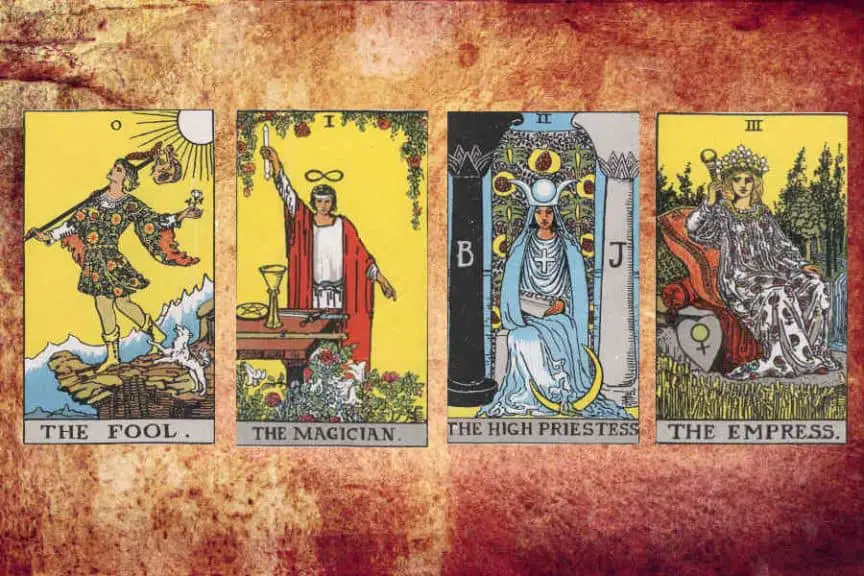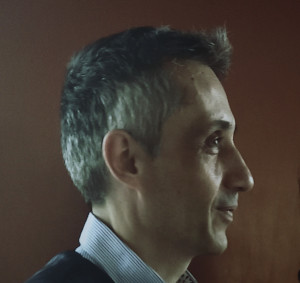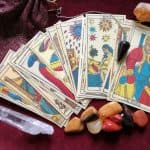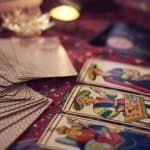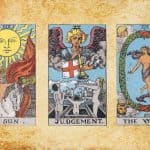Tarot is a very old system of esoteric knowledge developed over the centuries in secret Mystery schools and esoteric organizations.
The Major Arcana is a set of 22 tarot cards that are considered the core and foundation for the deck. The whole deck is full of archetypal significance, but this is more intense within the Major Arcana. Each card reveals some of this wisdom, through tables and symbols. It incorporates the energy of the symbols into it, reflecting and transmitting this energy to the user of the deck.
The Tarot can be used as an instrument for orienting oneself on the path toward greater awareness. We can use the Tarot as a guide for our inner transformation, revealing hidden messages and expanding our vision of ourselves and the cosmos. (Further reading: Comprehensive Timeline of Tarot History – 14th to 19th Century.)
If we have a sincere desire to see and accept, it can give us insight and new perspectives about any unclear situations, while it can lead us to valuable breakthroughs, greater clarity, and deeper insights into areas of life that concern us most. Additionally, the Tarot will give us information showing special strengths as well as revealing blind spots. Let’s start examining the cards of Major Arcana one by one.
0. THE FOOL
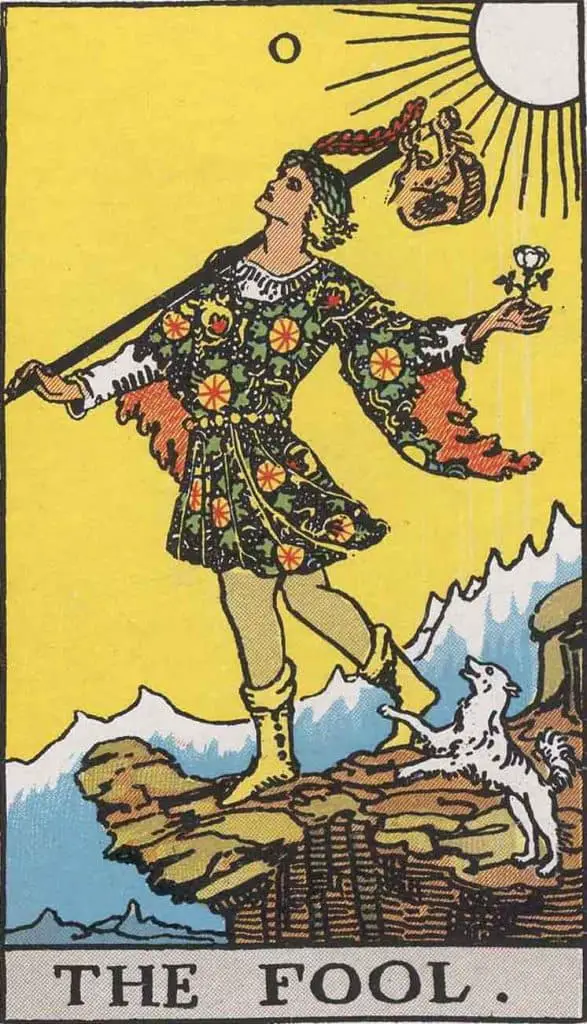
Correspondences:
- Hebrew letter: Aleph: The Ox
- Kabbalah: Ensoph
- Astrology: Uranus
- Element: Air
Keywords: New Beginnings, Impulsive, Alienation, Free Spirit, Adventure, Inspiration .
EXAMINATION
Amongst the cards of Major arcana, there is one that does not bear any number. It is the Fool and this peculiarity troubles us when it comes to assigning this card to a place in the pack. Should we place it in front of the Magician (Card I) or at the end, after the World (Card XXI)?
This is out of the question when we place the Tarot on a cycle, as the word ROTA suggests on arcana X (The Wheel of Fortune). This way the Fool seems to be a transition card, placed between the beginning and the end, and symbolizes, the incomprehensible “Infinite” from which we come and to which we are destined to return.
It bears the number Zero, which in occult arithmetic stands for absolute Unity, for “The One Reality” which is “Before All Beginnings”. The Fool is pictured as a careless man, who continues on his way without wondering where he is going. He is just about to fall from a great height into a deep abyss without paying attention to a dog barking at him.
The dog was used as a symbol of conscious clarity and of remorse for faults committed, which in another case could hold a person capable of discretion.
His costume is very colored to show the multiple and incoherent influences which he constantly undergoes. He has a rose in one hand and in the other a wand, from which depends over his right shoulder a sack curiously embroidered. His sack is inscribed with dim signs, to show that many subconscious memories are stored up in the soul.
The sun, which shines behind him, knows where he came from, where he goes, and how he will return by another path after many days. He is the spirit in search of experience. Insentient and irresponsible, he walks the path of his life as a passive being who does not know where he is going and is led by irrational impulses.
At the deeper inner level of interpretation, the Fool is a picture of the absolutely free and perfect Being. He represents all that is beyond the sphere of the intelligible, hence the Infinite outside the finite, the absolute enclosing the relative. (Quiz: Test your Knowledge on the Hidden Meanings of Tarot)
If we look closer at the picture will see that though the Fool stands close to the edge of a precipice, there is room for him to take another step forward. This indicates that we never come to the very limit of our possibilities. Always we can retrace our steps a little, and come to a place where further progress is possible.
This detail of the symbolism signifies an eternal esoteric truth. “No matter how far the Life-power may advance, it can always take another step.”
A practical lesson we can get from the Fool is this. Anyone who is so engrossed with actual or metaphorical sky-gazing that he pays no attention to his present situation run the risk of great dangers. So, do not project yourself so far into the future, that you don’t see where you are. Dreams and visions have their proper place, but also, you must always retain the clarity to deal with the practical issues of life.
Related reading: Exploring the Hidden Symbolism of a Deck of Cards – Opens in new tab
1. THE MAGICIAN

Correspondences:
- Hebrew letter: Beth (Double): The House
- Kabbalah: Kether
- Astrology: Mercury
- Element: Air
Keywords: The beginning, the first cause, the center of the action, skill.
EXAMINATION
In Arcana I, we meet “The Magician”, the keeper of esoteric knowledge. He is the god of Tarot, the father of all things, the eternal generator of the Word which takes form.
Upon the head of the Magician, there is the divine sign of infinity, which indicates the infinite possibilities of creation with the will. At the bottom of the image, there is a garden, representing the subconscious field from where the hidden powers of man come. These powers are symbolized by the white lilies and red roses.
The lilies stand for various aspects of truth, and the roses are symbols of human desires. There are four lilies because all possible human knowledge falls naturally into four main categories, and five roses because every human desire has a relation to one of the five major senses. The Magician cultivates these flowers. Using his power to control their development, takes them far beyond the conditions provided by nature. It is a transformer and a transmitter of experience.
The Magician himself is placed behind a table covered with four objects. These objects represent the mental tools employed by human consciousness to deal with the actual conditions of the human environment. (Quiz: Test your Knowledge on the Hidden Meanings of Tarot II)
- The wand, symbolizes the first tool. Consider that simply as a pointer. The first requisite for the solution to any problem is to give it one’s full attention. Every problem contains its own solution, and that solution is perceived by attentive observation.
- The cup symbolizes the second mental tool, the imagination. Observation collects experience. Imagination shapes it, as a cup shapes what is poured into it.
- The Sword symbolizes the third tool, the action. Nothing changes until we do something for it.
- The last is the coin, the finished product. This is the proper symbol because everything made by man’s ingenuity has value.
If we look closer, we will notice that around Magician’s waist is a serpent belt. In this belt, the serpent seems to eat its own tail. This is a familiar symbol of eternity, but especially here indicates the eternity of attainment in the spirit.
Among all symbols on this card, perhaps the most important detail is the position of the Magician’s hands which brings to our minds the hermetic principle, “as above, so below”. On his right hand is a wand raised towards heaven, while his left-hand points to the earth, making the universal gesture of attention.
The position of the hands represents the ability to act as an intermediate between the world above and the human world. Additionally, they could represent the two principles, active and passive, of the Great All, and it corresponds with the two columns Jachin and Boaz of the temple of Solomon.
So, we can say that Arcana 0, The Fool, puts you in touch mentally with the limitless Source of all power, and Arcana I, The Magician, calls into action the mental activities which you can apply in order to change the conditions of your life for the better. (Also read: The Best Tarot Books For All The Occult Students)
Do you want to learn more about Tarot? Check out our recommendations at “Tarot Bookshelf” and many free resources at our “Free Tarot Library”
2. THE HIGH PRIESTESS
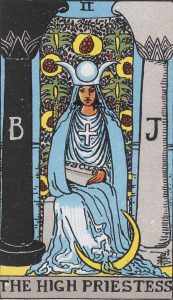
Correspondences:
- Hebrew letter: Gimel (double): Camel
- Kabbalah: Chocmah
- Astrology: Moon.
- Element: Water
Keywords: Mystery, Devotion, Secrets, Creative thought, Silence, Intuition, passive.
EXAMINATION
In this card, we have the first idea of passivity. The Mother of all things, which in the Tarot takes the form of the High Priestess, is seated motionless and calm, as opposed to the Magician who is the original cause of all action and cannot relax.
Her place is between two contrasting pillars at the door of a mystical temple, and the veil of the Temple behind her is embroidered with palms and pomegranates. The black and white pillars, give us to understand that all our perceptions are subject to the law of contrasts, light is only conceived as opposed to darkness, and good would be unknown to us if there was no evil.
Additionally, the two pillars, Jachin and Boaz, are like the arms of the Magician, expressing the Positive and the Negative or White and Black. (Quiz: Test your Knowledge on the Hidden Meanings of Tarot II)
The scroll in her hands is inscribed with the word Tora, meaning the Greater Law, the Secret Law, and it is partly covered by her mantle, to indicate that some things cannot be said but implied. The High Priestess wears a horned diadem on her head, with a globe in the middle, and on her breast, she bears the solar cross, while she has the lunar crescent at her feet.
The predominant color of the card is light blue in contrast with the warm red which dominates the card of the Magician. The vestments are flowing and gauzy, and the mantle has a shimmering radiance.
The High priestess represents Isis, the priestess of mystery. She is adorned with all the attributes of authority and persuasion. Her veil must not be raised before the profane, and the hidden doctrines cannot be revealed without her help. The teaching of the High Priestess is in fact based on imagination, as the crescent on her feet shows us.
Another meaning of this card is that depicts the subconscious mind. In this case, in her scroll, there are records of the past, as memory is the basic power of subconsciousness. With that in mind, we can see that the High Priestess is perfectly quiet and perfectly passive, as this is the first requirement for developing the faculties of the subconscious mind.
According to some views, this card is the highest and most sacred of the Great Arcana.
Do you want to learn more about Tarot? Check out our recommendations at “Tarot Bookshelf” and many free resources at our “Free Tarot Library”
3. THE EMPRESS
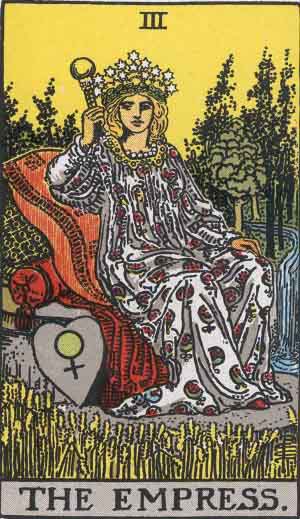
Correspondences:
- Hebrew letter: Daleth (double): Door
- Kabbalah: Binah
- Astrology: Venus
- Element: Earth
Keywords: Transformation, Prudence, rich fertility, discretion, idealism.
EXAMINATION
The third card of the Tarot is “The Empress” and is the result of the mutual action of the first two Tarot cards. The absolute creative force of the Magician and the absolute preservative force of Priestess, working together, gave birth to a new complete entity, the transforming principle.
The Empress is a seated, royal figure, with rich vestments and calm aspects, as of a daughter of heaven and earth. A happy serenity lights up her face, framed pleasantly by her soft blond hair. She wears a crown with twelve stars, which reminds us of the Zodiac, the celestial space on which the natural growth here below is based, and the gestation period required for reproduction.
In the left hand, she bears a scepter which indicates the passive influence, that Nature, Venus, or the woman exercises in the generation of beings. She has the symbol of Venus on her shield, as a direct correspondence to the astrological sign of Venus.
In front of her, there is a field of corn and behind her a small forest with a fall of water. All this scenery with abundant nature signifies that the Empress represents Mother Earth, the goddess of fertility. (Quiz: Test your Knowledge on the Hidden Meanings of Tarot)
Like the Magician, she is in a garden, and the pomegranate-patterned robe which is a prominent feature of this card represents fertility. The Empress is a woman in a seated position like the High Priestess but simultaneously is in contrast to the High Priestess because, as the Tarot tradition says, she is a wife and a pregnant mother. Specifically, the wife of the Emperor, whose picture follows hers in the series.
The High Priestess corresponds to the moon, related in mythology to the virgin Diana. But the Empress is Venus, the traditional patroness of childbirth, and mistress also of the arts and beauty. Card 3 is by number the sum of 1 and 2, or a symbol in the Tarot series of the Magician’s union with the High Priestess, whereby the virginity of Diana is transformed into the fertility of Venus.
Transformation is the main meaning of this card and it is your duty to begin the process of renewal of your life. You can create your future, no matter what, your past was. In the sense of this card, you can put into motion forces that, although at first, work almost imperceptibly under the surface, will inevitably lead to fulfilments far beyond the best of your present expectations. (Also read: The Best Tarot Books For All The Occult Students)
(For the next article regarding cards IV-VII, click here.)
Stay in Touch
 Join our newsletter by using the forms on this website or click here!
Join our newsletter by using the forms on this website or click here! Follow us on Google News
Follow us on Google News Follow us on Facebook
Follow us on Facebook
Featured Image By Pixabay.com
Images by The Rider Tarot Deck
Bibliography
- Arthur Edward Waite, “The Pictorial Key To The Tarot” 1911 (aff.link)
- Oswald Wirth “Tarot of the Magicians” 1927 & 1985 (aff.link)
- Paul Foster Case “Introduction to Tarot” 1922 (aff.link)
- Papus “The Tarot of the Bohemians” 1896 (aff.link)

